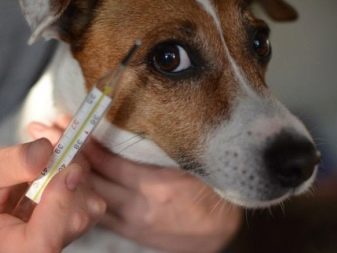Why shouldn't dogs be given chocolate?

Each owner loves his pet. After all, the dog is a member of the family, almost a 5-7 year old child, so everyone wants to treat her with something tasty, for example, a candy or a slice of chocolate. But it is worth remembering that foods that are normally tolerated by the human body, and even useful, can cause poisoning in dogs, if not fatal, then with serious consequences. Chocolate can be added to this list without hesitation.
What is harmful?
Theobromine is a purine alkaloid, a nitrogen-containing substance found in cocoa beans. In medicine, it is used to treat bronchopulmonary diseases. In small doses, it causes increased urination and stimulates the heart muscle. In large dosages, it initially has an exciting, then a depressing effect on the nervous system, dilates and narrows the blood vessels. Chocolate, thanks to theobromine, which gives a sense of artificial pleasure, always and for everyone improves mood and helps to cope with stress.
And for a dog, it is a poison that causes euphoria and highly addictive, and acts like a drug or alcohol. Theobromine acts in the same way on the owner and his pet. The only difference is that in a dog, the period of theobromine excretion is longer than in humans, and is about 20 hours. During this period, the dog's body will fully experience the toxic effects of chocolate.
For example, to get poisoned in humans, the theobromine concentration should be 1000 mg / kg of live weight, and for a dog the lethal dose is on average 300 mg / kg. Milk chocolate contains 150 to 200 mg of this substance.

In addition, caffeine is an alkaloid, in action it is similar to theobromine, but in chocolate it is found in much smaller quantities. The dog is very agitated, which can cause the pet to become aggressive. It has a diuretic effect and is highly addictive. It's not worth talking about the dangers of excess sugar. Obesity, allergies accompanied by itching and dermatitis, and diabetes mellitus due to impaired insulin production - this is what awaits the animals to which the owners give sweets.
A large number of flavors, both artificial and chemical, will not do any good for the dog either. And the raisins contained in chocolate can also cause poisoning or provoke kidney disease in a dog. For a small breed dog, 10-15 grams will be enough.
Even after studying the properties of the substances that make up the chocolate, owners will meet who will say: "But after all, something is unlikely to happen from a small slice of chocolate." Maybe it won't, but you shouldn't experiment on your pet, since different types of chocolate contain different amounts of theobromine, which is exactly what causes poisoning. The amount of theobromine is directly related to the amount of cocoa in the chocolate, and the darker the chocolate, the more dangerous it is for the dog.

For example, per 100 grams:
- white chocolate - 3.5 grams;
- milk chocolate - 150-200 grams;
- dark bitter chocolate (60.70.85% cocoa) - from 490 to 800 grams;
- baking chocolate - 1350 grams.
According to the described example, it can be seen that a small dog will have enough and a wedge of milk chocolate.

Scientists from America, after conducting a study, found that the first signs of poisoning can begin even at a theobromine ratio of 20 mg / kg of animal weight, and are most often accompanied by intestinal disorders.
Sweets with chocolate, marshmallows, chocolates and chocolate bars in their composition contain less cocoa products, respectively, and less dangerous substance, but it is still more than in white chocolate. However, there is another catch here. These treats are very sweet and fatty and can lead to the following conditions: pancreatitis, diabetes, kidney failure, obesity, and heart disease.
In addition, even a small slice can be addictive, and next time the pet will definitely take advantage of the right situation and eat much more chocolate.

Poisoning symptoms
The first symptoms may appear as early as 3 hours after the dog has stolen and ate the chocolate.
Here you should pay attention to the following points:
- the animal is overly active: the pet barks for no reason, moves from corner to corner, looking for a quiet place, lies down, but immediately gets up and runs;
- digestive disorders, vomiting and diarrhea appear;
- there is an increase in local temperature;
- the animal is trembling;
- rapid heartbeat;
- increased urination, blood may be present in the urine;
- the described symptoms may be accompanied by impaired coordination.


How to help?
If you notice or suspect that your pet has eaten chocolate, immediately go with him to the veterinary clinic. The sooner your pet is given first aid, the higher the likelihood of avoiding the consequences of poisoning. If signs of deterioration have already appeared and the animal has begun to vomit, don't stop her.
It is necessary to wait until the vomit contains food particles in its composition, and only then use "Polysorb", "Zoonorm" or "Enterosgel". Next, you should go to a veterinarian who will take tests and prescribe treatment. By contacting the veterinary clinic within 2-4 hours, you can hope for a complete recovery of the dog. In other cases, complications or death are possible.

How to replace chocolate?
If your pet is very fond of chocolate, you can replace it with "dog". Chocolate for dogs is made from the fruit of the carob, which is a source of inulin, which is beneficial for digestion. The stevia herb, which is used by diabetics as a sugar substitute, gives sweetness to the delicacy. And palm kernel oil and whey help the body to be in good shape. All ingredients are completely safe and non-allergenic.
Lecithin and vitamin complex will be very beneficial for the immune system. Blood albumin normalizes metabolism and has a positive effect on the hematopoietic system.

You can treat your dog with fruits and berries, especially since many tetrapods love them very much. They are harmless to the dog and provide a source of vitamins. From fruits and berries, you can give watermelon, apple, pear and apricots. The main thing is not to experiment with exotic things. It is recommended that you take some thin slices of jerky with you for the walk and reward your dog for doing the right commands. In addition, during your walk, you will probably see a pet store selling ready-made and healthy treats.
It is only important to remember that the delicacy should not exceed 10% of the daily diet.


Thus, one can make sure that Do not give chocolate to your dog. Even a small slice can contribute to poisoning, and you will reproach yourself for a momentary weakness for a long time. You should not indulge the whims of your pet, because his health depends on it. Moreover, today there are many tasty and healthy products designed to replace a harmful delicacy.
For information on which foods are bad for your dog, see the next video.






































